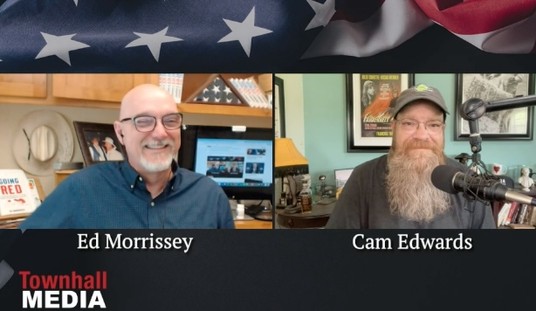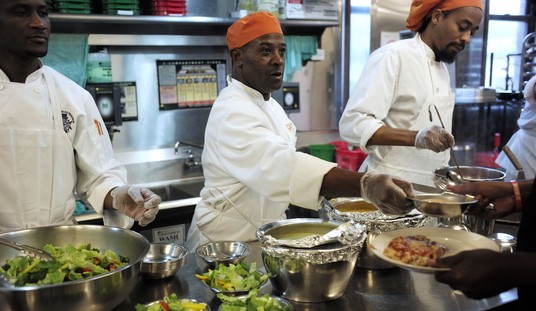Super Tuesday on 6 March will reset the stage for the next act in the GOP nomination process. It may be early days to draw comparisons, but it is worth noting one thing before Super Tuesday: the 2012 Republican primary season has, to date, looked more like that of 1996 than like any other from 1980 to the present.
A key feature 1996 and 2012 have in common is that, as of today’s date (4 March), the primary elections have delivered one outright win (50% or more of the vote) to any candidate. In 1996, Bob Dole won Puerto Rico with 98% of the vote before Super Tuesday. In 2012, Mitt Romney has won Nevada with 50% of the vote.
Otherwise, the assumed frontrunners in both elections remained in the 30-40% region throughout the early primaries. Bob Dole faced Pat Buchanan, Steve Forbes, and Lamar Alexander, whose combined “not-Dole” popular-vote total up through 4 March 1996 was 593,472 to Dole’s 443,381.
Assumed frontrunners are, of course, commonly beaten by the combined “not-frontrunner” vote total in the early primaries of a competitive year (i.e., when a party’s sitting president is not running). That is the case this year, with Romney at a vote total of 1,812,418 so far, and the combined total of Santorum, Gingrich, and Paul at 2,049,303.
In 1980, Reagan’s early vote total through 4 March – there was no “Super Tuesday” then – was at least 1,240,068, while his competitors combined had racked up 1,528,937. (The 1980 vote total for Alabama is unavailable at this writing, due to a server problem at the state government website.) In 1988 – a slower-starting primary year – Bush Sr.’s 4 March vote total was 224,871 to his opponents’ combined 401,377. In 2000, George W. Bush was sitting on 1,614,355 votes by 4 March, while John McCain had gotten 1,712,991.
But by 4 March, in each of those years, there had been more outright primary victories (by any candidate) than in 1996 or 2012. The following table covers Republican primaries in competitive, non-incumbent years back to 1980:
Elec. Yr No. Voting Primaries/ No. Primaries won by 50%
Binding Caucuses or more (any candidate)
Through 4 March
1980 5 2
1988 12 5
1996 11 1
2000 11 8
2008* 40 20
2012 12 1
* Super Tuesday was 5 February in 2008; entire primary schedule was heavily front-loaded
(All primary/caucus totals include District of Columbia and trust territories; totals do not include non-binding primary/caucus votes)
Obviously, there are multiple dimensions for comparison between years, and on other scores we may distinguish 2012 from 1996. The sitting president in each year is a Democrat who is popular with the media and gets good press, but in 1996 the US economy was in better shape and President Clinton was getting comparatively high marks for his handling of it.
In 2012, the economy is in unusually bad shape, with one key indicator – labor force participation – at its worst reading since the recession of 1982, and another – the price of gas at the pump – at its highest level ever. Meanwhile, President Obama’s handling of national security gets lower marks from poll respondents as the months go by. Bill Clinton famously tacked toward the center for the 1996 election; Barack Obama has tacked leftward, with socially divisive rhetoric and socialist talking points, and thus has major negatives that Clinton did not have.
So it is entirely possible that Obama will beat himself in November; we should not despair over the parallels between 2012 and previous years. That said, the quality of the assumed GOP frontrunner and the relative lack of enthusiasm for any of the candidates may give us pause. On reviewing this table of popular vote tallies for the presidential elections of the last 40 years, we must hope that the fear of Obama is greater than anything else, for GOP voters and GOP-leaning independents:
Elec. Yr Democrat Republican Independent
1972 29,173,222 47,168,710
1976 40,831,881 39,148,634
1980 35,480,115 43,903,230 5,719,850 (Anderson)
1984 37,577,352 54,455,472
1988 41,809,074 48,886,097
1992 44,909,806 39,104,550 19,743,821 (Perot)
1996 47,401,185 39,197,469 8,085,294 (Perot)
2000 50,999,897 50,456,002
2004 59,028,444 62,040,610
2008 69,456,897 59,934,814
Naturally, one of the key factors in 2012 is likely to be whether there is a third-party candidate with significant vote-getting power. At the moment, there doesn’t seem to be one on the horizon, which is good news for Mitt Romney and the fortunes of the GOP in the general election.
But the decline in enthusiasm for the GOP candidate from 2004 to 2008 was marked, if not as precipitous as the decline between 1988 and 1992, or 1972 and 1976. There is reason for concern as to whether a candidate with Romney’s record of comfort with big government is the man to lead a GOP resurgence. The drawbacks of his limited appeal suggest that a Republican victory in November is likely to be a narrow one, perhaps on the order of Jimmy Carter’s victory in 1976 or even Bush 43’s in 2000.
One additional factor has to be considered. Pundits speak with absolute certainly today about the economy being the main – possibly even the sole – driver of the voters’ decision in November 2012. And it may be, but there are 8 months to the general election, and a big world out there. Whatever drives the election will almost certainly be related to the economy in some way – but it won’t necessarily be what we can see or imagine on 4 March.
Note: Primary election/caucus information from Wikipedia, Dave Leip’s Atlas of U.S. Presidential Elections, and selected state government websites. General election vote totals from Wikipedia and Dave Leip’s site.
J.E. Dyer’s articles have appeared at The Green Room, Commentary’s “contentions,” Patheos, The Weekly Standard online, and her own blog, The Optimistic Conservative.
This post was promoted from GreenRoom to HotAir.com.
To see the comments on the original post, look here.









Join the conversation as a VIP Member